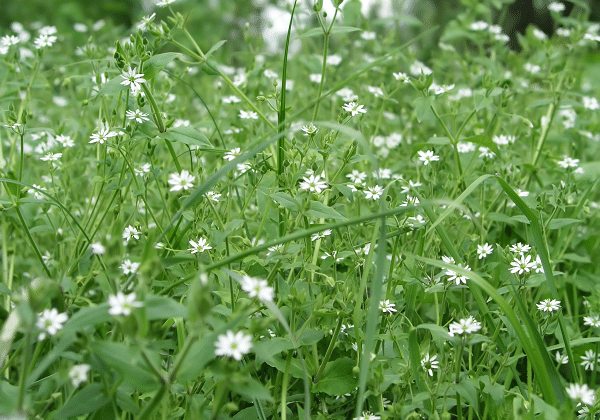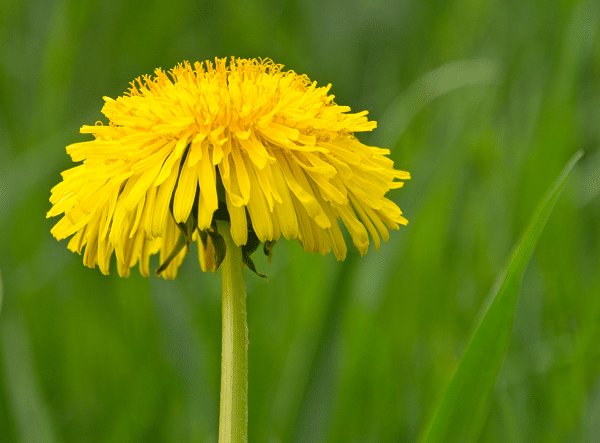Gardening enthusiasts often encounter a variety of flora in their gardens and yards that can be challenging to identify. Among these, certain common weeds can easily masquerade as beneficial plants, leading to confusion and potential gardening pitfalls. Understanding these deceptive species is critical to effective garden management and ensuring the health and vitality of your desired plants. This blog post will introduce and discuss several such species, offering insights into their identification, their impact on your garden, and any unexpected benefits they might offer. Let’s explore the intriguing world of common weeds often mistaken for plants.
Contents
Chickweed (Stellaria media)
The next species on the list is the Chickweed, or Stellaria media. This weed is often mistaken for a beneficial plant due to its small, star-shaped white flowers and lush green foliage. Chickweed thrives in cool, moist conditions and often appears in the early spring or late fall when other plants struggle to grow. As such, gardeners might initially welcome the green relief it provides.
However, Chickweed grows rapidly and can quickly overtake a garden, blocking sunlight and stealing valuable nutrients from other plants. It also reproduces prolifically, both by seeds and through spreading stems that take root wherever they touch the ground. Despite these challenges, Chickweed is not entirely without merit. It is edible and nutritious, often used in salads and as a herbal remedy for skin ailments. Yet, its fast-growing and invasive nature often leads to it being more of a nuisance than an asset in the garden.
Trumpet Vines (Campsis radicans)
Trumpet Vines, or Campsis radicans, with their stunning trumpet-shaped flowers and fast-growing nature, are often mistaken for decorative climbing plants. Their ability to rapidly cover trellises, walls, or fences with bright orange-red blossoms can make them seem like an excellent choice for adding color and vertical interest to a garden.
However, Trumpet Vines are highly aggressive and invasive. They can quickly overrun a garden, smothering other plants and trees, and even damaging structures with their strong tendrils. Additionally, they are difficult to control due to their deep root system and prolific seed production. On the bright side, Trumpet Vines are a favorite of hummingbirds and can be a valuable resource for attracting these beautiful birds to a garden. Nevertheless, their aggressive growth and potential for destruction often outweigh the benefits they might bring.
Dandelion (Taraxacum officinale)
The first commonly mistaken weed is the Dandelion, known scientifically as Taraxacum officinale. Dandelions, with their sunny yellow blooms and spherical seed heads, are often deemed attractive additions to a garden. However, despite their visual appeal, these persistent perennials can dominate a landscape, often at the expense of other plant species. Their deep taproot system allows them to resist many types of weed control, making their management a challenge.
Another point of interest is the dandelion’s unique contribution to an ecosystem. Dandelions are, in fact, edible from flower to root and serve as a crucial early spring food source for pollinators. They also possess medicinal properties, with traditional uses ranging from aiding digestion to reducing inflammation. However, their aggressive nature and tendency to monopolize resources often outweigh these potential benefits in a garden setting.
Fennel (Foeniculum vulgare)
Fennel, known by its scientific name Foeniculum vulgare, is another weed commonly mistaken for a plant. Its feathery leaves and yellow flower umbels can add visual interest to a garden, while its distinctive anise-like scent provides sensory appeal. These characteristics, combined with its culinary and medicinal uses, often lead to it being welcomed into the garden as a useful herb.
Yet, Fennel is a highly invasive species that can quickly take over a garden space, crowding out other plants. It is allelopathic, meaning it releases substances that inhibit the growth of surrounding plants, thus ensuring its own dominance. Additionally, most other plants struggle to thrive when planted near fennel due to this allelopathic nature. Despite its appealing traits and uses in the kitchen and traditional medicine, Fennel’s aggressive and invasive tendencies often create more challenges than benefits in a garden setting.
Common Purslane (Portulaca oleracea)
Common Purslane, or Portulaca oleracea, is frequently mistaken for a desirable plant due to its succulent-like appearance and bright yellow flowers. This summer annual is heat and drought-tolerant, which can make it seem like a robust addition to a garden, particularly in hot, dry climates. Purslane spreads rapidly across the ground, forming dense mats that can smother other plants and deprive them of essential nutrients.
Despite its invasive nature, Purslane is not without redeeming qualities. This weed is one of the most nutritious plants around, boasting high levels of omega-3 fatty acids, vitamins, and minerals. In many cultures, it is used as a food source, and its slightly sour and salty leaves can be eaten raw or cooked. However, due to its rapid growth and invasive tendencies, care must be taken when introducing Purslane into a garden, even as a food source.
Broadleaf Plantain (Plantago major)
Broadleaf Plantain, scientifically known as Plantago major, is another common weed that is often mistaken for a beneficial plant. With its rosette of broad, oval leaves and tall seed stalks, Broadleaf Plantain can seem like an attractive and intriguing addition to a garden. It is highly resilient, able to grow in various soils and conditions, making it appear to be a strong, adaptable plant.
However, Broadleaf Plantain spreads rapidly through prolific seed production and can become dominant in lawns and gardens, outcompeting desirable plants. It is also a host for certain pests, which can lead to further garden problems. Despite these issues, it does have some redeeming qualities. Broadleaf Plantain has medicinal properties and has been used in traditional medicine to treat various ailments, from wounds and skin infections to coughs and colds. Nevertheless, due to its invasive nature and potential to harbor pests, Broadleaf Plantain is often seen as a weed to control rather than a plant to encourage.
Conclusion
In the world of gardening, proper identification of plant species plays a crucial role in maintaining a healthy and balanced ecosystem. Weeds like Dandelion, Chickweed, Fennel, Common Purslane, Prickly Lettuce, Trumpet Vines, and Broadleaf Plantain can often deceive even the most discerning gardeners due to their attractive or interesting features. However, the invasive and aggressive nature of these species usually causes more harm than good, despite some unexpected benefits they might possess. It’s essential to recognize these species and manage them effectively to ensure that the garden thrives. In the end, a well-informed gardener is the best defense against the invasion of these commonly mistaken weeds.





